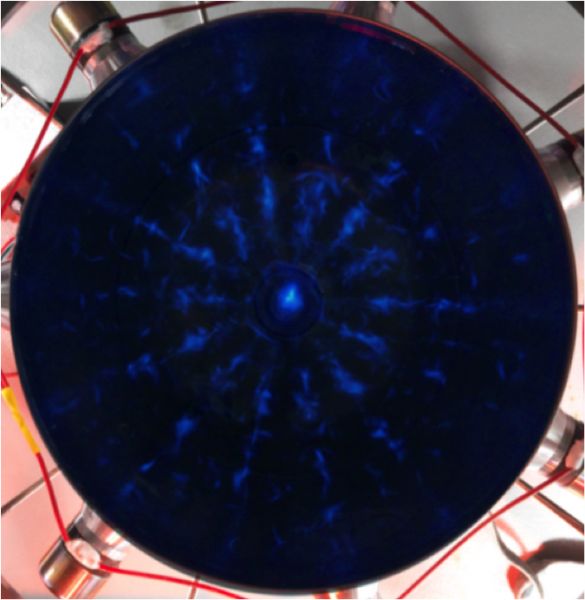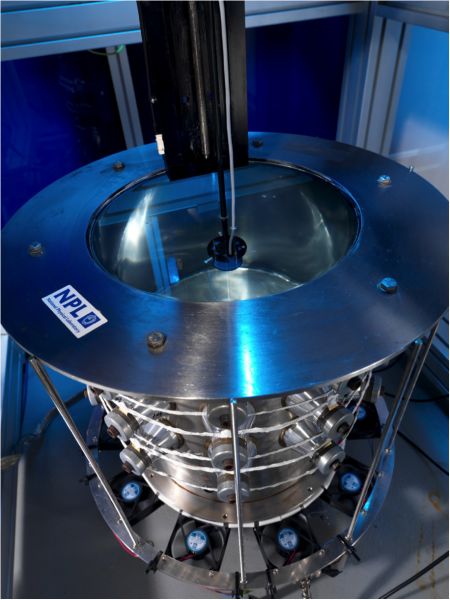In support of long-term research towards establishing measurement standards for acoustic cavitation, the National Physical Laboratory (NPL) has collaborated with Sonic Systems since 1996. Two advanced experimental facilities have been developed as a result. The first of these, which was designed, built, and commissioned in 2003, was a cylindrical 25 kHz sonoreactor, with 30 transducers transmitting into a 28 litre aqueous volume. It has since been used extensively to establish a reference facility for acoustic cavitation, and two peer-reviewed papers have been published describing measurements made in the vessel, including the first published figure for the acoustic pressure threshold of inertial cavitation at 25 kHz. It has also been the subject of ten international conference presentations, and is currently being used to investigate nanomaterial dispersion.
1. Towards a reference ultrasonic cavitation vessel. Part 1 – Preliminary investigation of the acoustic field distribution in a 25 kHz cylindrical cell. Mark Hodnett, Min Joo Choi and Bajram Zeqiri, Ultrasonics Sonochemistry, Vol.14, January 2007, 29-40.
2. Towards a reference ultrasonic cavitation vessel. Part 2 – Investigating the spatial variation and acoustic pressure threshold of inertial cavitation in a 25 kHz ultrasound field. Mark Hodnett and Bajram Zeqiri, IEEE Transactions on Ultrasonics, Ferroelectrics and Frequency Control, Vol.55, August 2008, 1809-1822.
To meet evolving industry requirements, in 2010, NPL commissioned Sonic Systems to develop a new multi-frequency reference cavitation vessel. Operating at six discrete frequencies, and driving three rows of seven transducers in the range 20-140 kHz, the unique system has precision PC control over the applied drive conditions, so as to optimise the repeatability of the generated acoustic field, and resulting cavitation in a 15 litre cell. This system forms the centrepiece of cutting-edge applied research, consultancy and cavitation characterisation services at NPL, and is now being used to intercompare acoustical, optical, erosive and chemical techniques for detecting cavitation, to define a new generation of measurement parameters.

Chemiluminescence at 44 kHz in the multi-frequency vessel

NPL’s cavitation sensor being used to scan the 25 kHz Sonic Systems vessel
Please follow link for more about NPL ultrasound research : http://www.npl.co.uk/acoustics/ultrasound/research/high-power-ultrasound-and-acoustic-cavitation